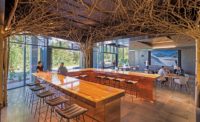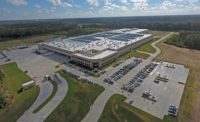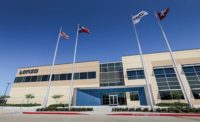MycoTechnology Inc. Mushroom Fermentation Production Plant & Headquarters
Aurora, Colo.
BEST PROJECT
Owner: MycoTechnology Inc.
Lead Design Firm, MEP Engineer & Design-Builder: CRB
Structural Engineer: OES Engineering Solutions Inc.
Civil Engineer: Colorado Civil Group Inc.
Subcontractors: A&B Process Systems; D&E Steel; Kenny Electric; Murphy Co. Mechanical Contractors & Engineers
MycoTechnology uses mushroom fermentation to solve some of the biggest challenges facing the food and beverage industry. Its product, ClearTaste, was the world’s first certified organic bitter blocker, which helps companies reduce sugar and salt content to create healthier products without sacrificing flavor.
After the commercialization of ClearTaste, MycoTechnology took on the challenges faced by the protein industry with its shiitake mushroom fermented protein, PureTaste.
MycoTechnology’s new headquarters and fermentation process plant in Aurora, Colo., is an 86,000-sq-ft facility that can produce up to 4,000 metric tons of protein per year. The facility features office, conference and tasting space for more than 75 managerial and technical staff members as well as a changing room and break room for its 45 production team members.
MycoTechnology’s innovative fermentation process cleans up the taste profile of plant-based proteins, minimizing the flavor impact and resulting in a better tasting product. The client wanted the design of the facility to incorporate some of the product’s key qualities—specifically its organic, natural, clean taste.
Customers are welcomed into the lobby with natural wood and stone materials, while glass walls provide a clear line of sight into the production area to highlight cleanliness and remind visitors and employees of the all-natural product being grown in the facility.
The plant-based protein is grown in large fermentation tanks, taking advantage of vertical space in the production facility. This allows for more production per square foot, which drastically reduces the overall carbon footprint by limiting water, energy and CO2 production.
The team was challenged to design and build the production facility in ways that could facilitate future flexibility and expansion. During the design phase, building information modeling was used for design and constructibility reviews and to determine the best paths for the installation of large utility equipment. Last Planner software also was used extensively to schedule and plan during construction.
Back to "Annual Awards Competition Attracts the Most Entries in Its History"






Post a comment to this article
Report Abusive Comment